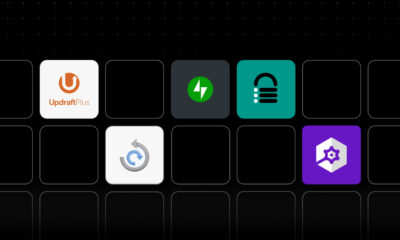Shopify Payments At a Glance
- Seamless integration for Shopify stores: Shopify Payments is the default payment option for Shopify store owners.
- Multiple subscription options: With Shopify Payments, you can sign up for a Starter, Retail, Basic, Shopify or Advanced plan. The Basic plan is the most popular.
- Several options for integration and point-of-sale (POS) hardware: Shopify Payments is flexible for different businesses, including for merchants who want to sell online, in-store or both.
Pros
Shopify Payments is automatically set up with Shopify stores. Merchants can track their orders and payments through an integrated platform.
With Shopify Payments, you’re also able to sell in different currencies even if they don’t match the currency of your bank. The transaction fees can be competitive depending on which plan you sign up for and how much money your store will process in transactions on a regular basis.
Cons
Shopify Payments is a good option to consider if you’re already using Shopify. However, Shopify Payments does charge a monthly subscription fee in addition to transaction fees, which is something not all competitors do—many only charge transaction fees. The Advanced plan costs up to $299 per month for the annual plan. Also, there are extra fees merchants may have to pay, such as the Retail Business POS costs for an additional $79 per month.
Additionally, only customers in 23 countries will be able to use Shopify Payments. These countries include the United States, Canada, Japan, Australia and several others in Europe.
How Shopify Payments Works
Shopify is a popular Canadian e-commerce company that allows companies and brands to easily set up an online store and sell products online. The company also processes payments with Shopify Payments.
When e-commerce businesses or other retail stores open a Shopify account, they’ll have the option of using Shopify Payments. There are many benefits to using Shopify Payments with a Shopify store instead of a third-party credit card processor. The first is that you may save on transaction fees because, in addition to the payment processing fee, Shopify charges an additional fee starting at 0.5% per transaction for third-party credit card processors. Using Shopify Payments also automatically syncs with e-commerce stores so online and in-person product inventory is automatically updated.
With Shopify Payments, you’ll be able to process payments with a point-of-sale (POS) (there are two versions: Lite and Pro) and online. The hardware POS includes a card reader, barcode scanners, cash drawers, printers and an interactive screen.
Shopify Payments Core Features
Here are some of the core features on Shopify you’ll have access to when you use Shopify Payments including:
- Unlimited products: There’s no limit to the number of products you can sell on Shopify.
- Brand assets: You’ll be able to add and manage your brand assets such as a logo and slogan directly through your account.
- Fraud analysis: Shopify Payments automatically alerts you to potential fraud so that you can investigate the purchase and stay ahead of potential chargebacks and losses.
- Abandoned cart recovery: Customers will get an email reminding them about their abandoned cart. You can customize this email based on your brand.
- Discount codes: Easily offer discounts to your customers.
What Sets Shopify Payments Apart
What sets Shopify Payments apart and makes it an attractive option for certain business owners is the fact that it works so well with Shopify (and it’s also the default option). This also makes the checkout process easier for customers (and may potentially increase sales as a result). It also makes inventory management between an online and in-person store seamless.
Shopify Payments Pricing and Plans
Shopify offers different subscription plans. Here’s an overview of the different options and their main features.
Shopify Payments Fees
Transaction fees are one of the first factors people look at when they are considering a payment processor. After all, you’ll be paying these fees on every transaction, so you’ll want to try to lock in the best possible rate for your business.
Shopify Payments charges two different fees: a monthly subscription fee and a transaction fee. Both fees vary by plan.
Shopify Payments’ Starter plan is a very basic minimal plan at $5 per month with transaction fees of 5%. Because the transaction fees are so high, this plan only makes sense if you’re just getting started accepting transactions. What’s helpful is that the company makes it very easy to upgrade whenever you are ready. This plan also does not come with a POS.
The more you pay per month, the lower your transaction fees are. The Shopify Plan and Advanced plan also receive steep shipping discounts compared to the Basic plan (up to 88% compared with up to 77%).
In addition to transaction and subscription fees, there are other fees to consider:
- Chargeback fee: Shopify Payments charges $15 for every chargeback.
- Alternative payment gateway fee: If you choose to use Shopify as your store but are not using Shopify Payments, Shopify will charge an additional fee of 2% for the basic plan, 1% for the Shopify Plan and 0.5% for the Advanced plan.
- POS Pro for retail businesses: All the plans listed above come with POS Lite by default. Retail businesses who want to sell in the store and have features to manage staff, inventory and more can upgrade to a POS Pro for $89 per month per location. The main differences between POS Lite and POS Pro are that with the second option, unlimited staff can access the POS, it comes with customer loyalty insights, captures customer profiles and provides retail analytics.
Shopify Payments Setup
Follow these steps to set up Shopify Payments:
- Confirm eligibility requirements: Before you consider setting up Shopify Payments, you’ll want to be sure your store meets the eligibility requirements. Shopify Payments can only be used in specific countries. The list can be found here. In addition, certain businesses are prohibited from using Shopify Payments, including financial products or services, pseudo pharmaceuticals, counterfeit products and more. Read the full list here.
- Decide your store currency: This is the currency your products are sold in. You will choose a store currency under settings in your account, and select the currency under “store currency.” You are able to select a store currency that is different from the currency of your bank account.
- Activate Shopify Payments: Under the “payments” option in your account, you will be able to complete the setup for Shopify Payments.
- Input business information: Shopify will ask you to input your business, personal information and banking information.
- Waiting for confirmation of your account: Once you complete your registration, it may take up to three business days for your account to be approved by Shopify Payments.
Shopify Payments Ease of Use
One aspect of Shopify Payments that makes it particularly easy to use is that it automatically connects to your Shopify store and will integrate with your inventory both online and off-line. Customers will also be able to pay directly through your store without being directed to a third-party app, making the checkout process cleaner and more seamless.
Shopify Payments Security
All Shopify stores are Level 1 PCI DSS compliant. The Payment Card Industry Data Security Standard (PCI DSS) is the standard security measure for all companies that process credit and debit card payments.
Shopify Payments PCI compliance ensures that Shopify takes the following security measures for all stores:
- Maintains a secure network
- Protects cardholder data
- Maintains a vulnerability management program
- Implements strong access control measures
- Regularly monitors and tests networks
- Maintains an information security policy
Shopify Payments Customer Service and Support
Shopify Payments offers multiple ways of getting support: a live chat 24/7, a community forum and a help center. The community forum is a good place to look for answers to general and technical questions. There are sections for discussions, groups, events and a blog. The community forum is also active and current.
The Help Center includes different tutorials for each part of payment processing you might run into, including POS, different sales channels and the Shopify checkout. This information is shared both in an article and with video tutorials.
Shopify Payments does not offer phone support.
The Fine Print
While the Starter plan has the lowest monthly fee at $5 per month, the transaction fees are higher than most competitors. For example, Square’s transaction fees are 2.9% plus 30 cents per transaction for online payments and the company does not charge a subscription fee. Shopify Payments does not enable off-line payments, which is a feature other payment processing companies offer.
Shopify Payments Alternatives and How They Compare
Shopify Payments vs. Square
Shopify Payments is a good choice for business owners who are already using Shopify, especially because it’s the default option. Square is a better choice if you’re looking for versatility. It is incredibly easy to set up and start accepting payments. While Shopify Payments also has a starter option, it charges a 5% transaction fee, which is much higher than Square’s basic transaction fee.
Shopify Payments vs. Stripe
Stripe offers much more flexibility, so it’s a good option for business owners who do not sell on Shopify. Stripe integrates with many different software including Adobe Commerce (Magento), Shopware, WooCommerce and WordPress. Stripe also makes it easy to accept international payments, making it a good option for merchants operating in multiple countries.
Shopify Payments vs. Clover
Both solutions offer extensive features, but Clover is better suited for restaurant businesses while Shopify Payments is best suited for online stores already using Shopify and for retail businesses.
Who Is Shopify Payments Best For?
Shopify Payments is an ideal choice for businesses that are already using Shopify as their e-commerce platform or POS system. With competitive processing rates, and seamless integration with Shopify, setup is seamless for Shopify merchants and you can accept payments immediately upon opening an account.
Frequently Asked Questions (FAQs)
Is Shopify Payments reliable?
Yes, Shopify Payments is a reliable and secure payment processor. The company is PCI compliant and one of the payment processor’s core features is fraud analysis, which automatically flags potentially problematic orders.
What are the disadvantages of Shopify Payments?
Shopify Payments charges a monthly subscription fee to use its service in addition to transaction fees. You may find these fees add up to a much higher amount than using a competitor such as Square. However, keep in mind that if you already use Shopify for your online store but want to use a third-party payment processor, you will have to pay an additional transaction fee between 0.5% and 2%.
Should I set up PayPal or Shopify Payments?
The decision to use PayPal or Shopify Payments will depend on many factors including where you conduct business (online or in-person) and how many transactions you make on average per month (this will determine your transaction fee rate). Shopify Payments integrates seamlessly with the Shopify store, which means customers can pay directly on your store instead of being directed to a third-party website.
Is Shopify Payments expensive?
Whether or not Shopify Payments is expensive will depend on the specifics of your store and which other options are available to you. If you are already using the Shopify store for your business and you are not planning on changing this, then your options are either to use Shopify Payments (for a monthly fee depending on which tier you sign up for) or to use a third-party payment processor but pay an additional transaction fee between 0.5% and 2%. To calculate the better deal for your business, consider these costs in relation to how much income your online store generates per month.






















